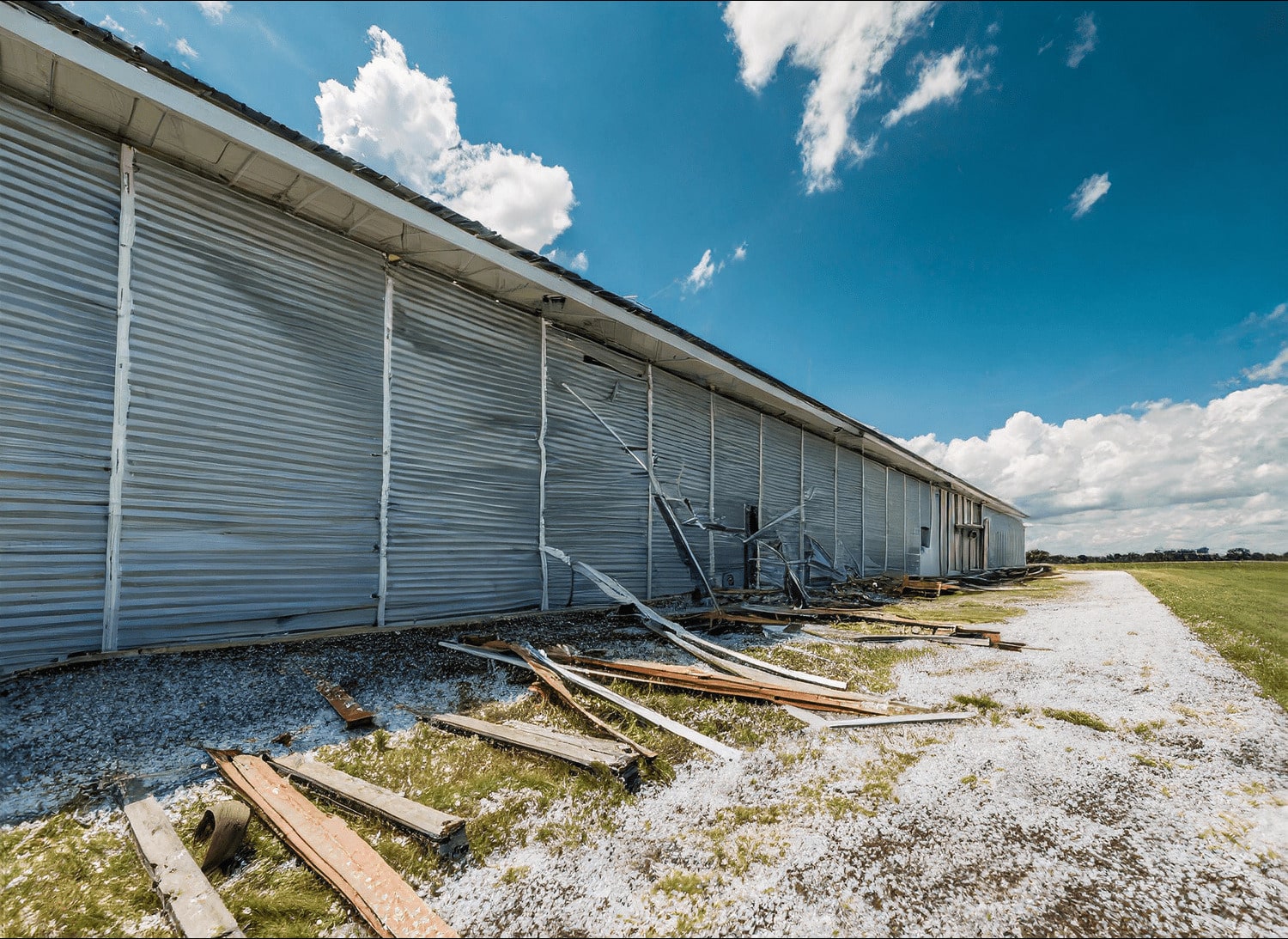5 Ways to Cut Wind and Hail Damage Risks for Insured Clients

Storage facilities in the US and Canada suffer major damage from wind and hail storms. These natural disasters result in expensive repairs and disruption to businesses. According to recent statistics, wind and hail-related insurance claims have been increasing over the past decade in the U.S. and Canada, creating challenges for both insurance companies and policyholders.
We saw thousands of reports of large hail across the U.S. and Canada this year, measuring about 5 cm in diameter or larger. These winds and hail storms damage the storage facility’s roofs, siding, and windows. If you own a storage facility, it is essential to understand and mitigate wind and hail damage risks to secure the insured client’s storage.
Importance of Protecting Insured Clients
It is extremely important to consider the financial consequences of wind and hail damage for insured clients. In case of such damage, policyholders may have to pay increased insurance premiums and deductibles, which can add to their financial burden.
Insufficient protection against these risks can also lead to long-term effects such as decreased property values and difficulty in obtaining future insurance coverage.
How to Mitigate Wind and Hail Damage Risks
In this blog, we will look into how to protect storage facilities for your insured clients from wind and hail risks and discuss practical strategies to mitigate wind and hail damage effectively.
Protect the Roof
The roof is the most important part of the structure. It is also the most vulnerable to damage from wind and hail. The best way to protect the roof is to install overlapping tiles, which are also known as roof shingles. These shingles are designed to withstand hail and high winds.
If you are tight on budget and impact-resistant tiles are not suitable for you, install a secondary water barrier on the roof. A secondary water barrier can help your facility prevent leaks and other damage if the roof is blown off. Along with both precautions, insurance for storage facilities is essential to add a layer of extra protection to their insured client’s belongings.
Reinforce Windows and Doors
Windows and doors are the most vulnerable parts of a house when it comes to wind and hail. High winds can create enough pressure to shatter windows and blow indoors, and hail can easily break glass and dent or damage doors.
Installing storm shutters is the best way to protect windows and doors from wind and hail damage. Storm shutters are designed to cover and protect windows and doors during severe weather and can be installed permanently or used as needed. There are many different types of storm shutters to choose from, including
- Accordion shutters
- Bahama shutters
- Colonial shutter
- Roll-down shutters
- Storm panels
- Plywood shutters
Another option is to replace windows and doors with impact-resistant or reinforced models. Impact-resistant windows and doors are made of multiple layers of glass or plastic and are designed to withstand high winds and flying debris.
Reinforced windows and doors are made of standard materials but are designed with additional features, such as shatterproof films or protective screens, to increase their strength and durability.
Trimming Trees
Having a tree near the storage facility can have both its benefits and drawbacks. Trees do add aesthetic value to your facility, but during wind and hail storms, they can also cause serious damage.
In order to prevent damage, it is important to trim branches that are touching your property or are near power lines to keep your storage facility secure. Additionally, opt for wind-resistant borders around your facility to further protect your property from potential damage.
Regular Maintenance
Regular inspection and repair of any damage to the facility are essential preventive measures against wind and hail damage. Insured clients should also secure loose outdoor objects, such as patio furniture and garden ornaments, to prevent them from becoming projectiles during storms.
Regular inspection and repair of any damage to the facility are essential preventive measures against wind and hail damage. Take storage content insurance to add an additional layer of protection to your belongings.
Utilizing Technology
Storage facility owners should prepare for the upcoming wind and hail storms by keeping an eye on weather forecasts. Install weather monitoring systems that will keep you informed about upcoming storms and enable you to take proactive measures to protect your storage facility.
Investing in hail and wind detection technology increases the value of your storage and also protects you from potential damage.
Educating Insured Clients
Providing guidance on storm preparations and offering services for emergency planning can empower insured clients to take proactive steps to mitigate wind and hail damage risks. By educating clients about the importance of preparedness, insurers can foster a resilience and risk awareness culture.
Conclusion
In conclusion, mitigating wind and hail damage risks is essential for protecting insured clients and minimizing financial losses. Taking these simple steps can help storage facility owners reduce damage and costly claims. By implementing new technologies and strategies, you can safeguard your property effectively.
It is essential for insurers to prioritize risk management and offer comprehensive protection against wind and hail damage, thereby ensuring the resilience and security of their insured clients’ properties.
 File
File